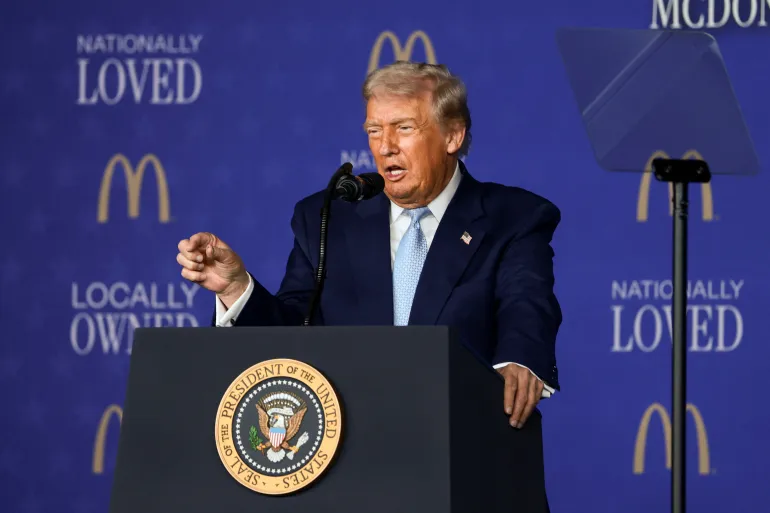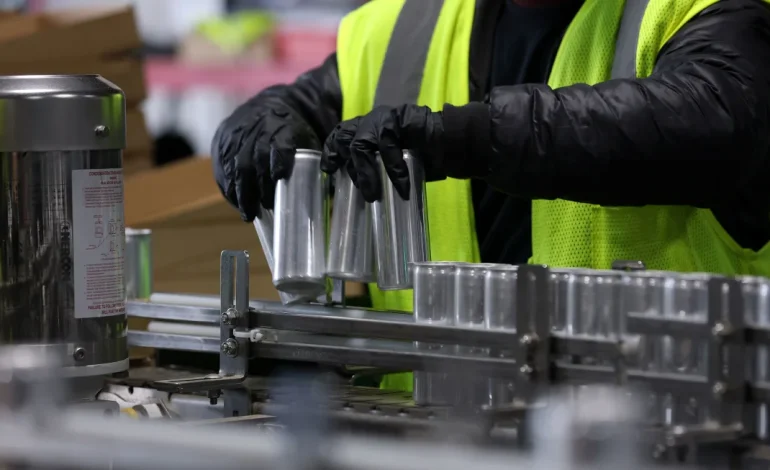In a surprising turn for the US economy, producer prices declined in April by the largest margin in five years, according to data released Thursday by the Bureau of Labor Statistics.
The unexpected drop highlights how businesses are absorbing rising costs, especially from tariffs, rather than passing them on to consumers.
The Producer Price Index (PPI), which measures the prices paid to domestic producers for their output, fell 0.5% in April. That’s the steepest monthly decline since 2020, and it contrasts sharply with economists’ median forecast of a 0.2% increase. Core measures also showed weakness: excluding food and energy, prices dropped 0.4%, the largest decline since 2015. A broader gauge excluding food, energy, and trade services recorded its first decline in five years, dipping 0.1%.
The decline was largely driven by a 0.7% drop in services prices — the sharpest since the series began in 2009. This was primarily due to reduced profit margins for wholesalers, particularly in the machinery and vehicle sectors. Goods prices, excluding food and energy, did increase by 0.4%, driven in part by a continued rise in certain manufactured items.
Economists interpret the figures as a sign that companies are choosing to absorb higher input costs rather than immediately raising prices, particularly as ongoing tariffs weigh on margins. A recent Federal Reserve Bank of Atlanta survey showed fewer than 20% of businesses said they could fully pass on a 10% cost increase to customers.
“There is growing evidence that trade policies, especially tariffs, are beginning to squeeze company revenues and profit margins,” said Joe Brusuelas, chief economist at RSM US.
He added that such pressures are now showing up more clearly in hard economic data.
Consumers are already showing signs of caution. April retail sales were nearly flat, rising just 0.1% after a sharp 1.7% gain in March. Consumer sentiment has also weakened, suggesting households are feeling the strain of economic uncertainty and potential price hikes.
In response, some companies are taking different approaches. Automakers such as Stellantis and Hyundai are keeping vehicle prices steady or offering discounts to maintain demand, despite facing higher costs from tariffs. Meanwhile, major retailers like Walmart have indicated they will begin raising prices on some products as absorbing costs becomes less feasible.
Walmart CEO Doug McMillon stated Thursday that while the company will try to limit price increases, “the higher tariffs will result in higher prices,” due to the retailer’s narrow profit margins.
The latest PPI numbers also sparked a reaction in financial markets. Treasury yields fell as investors increased their bets that the Federal Reserve may cut interest rates later this year. The dollar slipped slightly, and S&P futures recouped some of their earlier losses.
Federal Reserve Chair Jerome Powell, speaking Thursday, warned that the economy may be entering a phase of more frequent and persistent supply shocks. These shocks, he said, could result in greater inflation volatility than seen in the 2010s.
While food prices fell again in April — notably with egg prices dropping more than 39% — and energy costs continued to decline, underlying inflation pressures from tariffs and global trade tensions remain a concern. Many analysts expect these to filter into consumer prices in the months ahead, potentially reversing recent soft inflation readings.
Despite April’s decline, the PPI rose 2.4% year-over-year. That’s down from a revised 3.4% in March, reflecting a significant cooling in annual wholesale inflation. Still, the full impact of trade tensions and shifting policy conditions is likely to play out over the coming months.
With input from CNN, Bloomberg, and the Wall Street Journal.









The latest news in your social feeds
Subscribe to our social media platforms to stay tuned